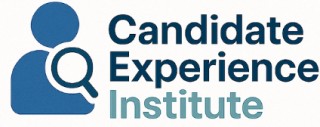
The Importance of Employee Files in Recruitment
Why Employee Files Matter in Recruitment Processes
In the dynamic landscape of recruitment, the importance of maintaining detailed and well-organized employee files cannot be overstated. These files store pivotal information that not only facilitates efficient management but also enhances candidate experience significantly. Each employee file is a treasure trove of valuable data points—from resumes and performance development records to documents related to medical leave and benefits. Proper records management serves multiple purposes. Primarily, it acts as a comprehensive repository that allows seamless access to critical employee documents, benefiting the company throughout the employment lifecycle. For instance, it aids HR teams in assessing candidate suitability and tracking employee performance. This becomes particularly useful during periods of high turnover or rapid company expansion, when quick access to personnel files can streamline hiring processes. Employee files also play a crucial role in reinforcing the credibility and professionalism of a company. With efficient file management systems in place, organizations can demonstrate their commitment to transparency and organization, both of which are key pillars in building trust with potential employees. By adopting best practices for keeping employee data accurate and up-to-date, businesses not only enhance internal operations but also improve their standing in the eyes of potential recruits. Moreover, companies today are increasingly leaning towards digital solutions when it comes to file management. While traditional physical records have their place, digital employee files offer conveniences like better data accessibility and enhanced security features, which are invaluable in today's fast-paced business environment. This shift not only reduces the risks associated with physical documentation but also speeds up processes like payroll management and performance assessments. An integral part of understanding HR sourcing strategies is effectively managing employee files. By ensuring these records are meticulously organized and easily accessible, companies can avoid delays and inefficiencies that detract from the overall candidate experience.What Information Should Employee Files Contain?
What to Include in Your Personnel Files
When it comes to maintaining employee files, companies must accurately and comprehensively compile personnel records to ensure efficient file management. Let's explore the crucial components that should be part of these employment documents.- Personal Information: Basic details such as name, address, contact number, and emergency contacts are essential. This data helps to readily identify and reach out to employees as needed.
- Employment-Related Documents: Include the job application, resume, offer letter, employment contract, and agreements related to confidentiality or non-compete clauses.
- Performance and Development Records: These records track employee performance and performance development plans. Monitoring an individual's progress can guide subsequent training or promotion decisions.
- Payroll and Benefits Information: Records should incorporate salary details, tax forms, and benefits enrollment, ensuring accurate payroll processing and benefits management.
- Medical Records: While sensitive, it is crucial to keep separate medical-related documents, especially those that pertain to workplace accommodations or medical leave.
Legal Considerations for Employee Files
Ensuring Compliance and Best Practices in Employee File Management
Proper management of employee files involves more than just filing away documents. It's about ensuring compliance with legal regulations and implementing best practices to protect employee data and the company’s interests. Legal considerations play a crucial role in determining how employee files, and personnel records are maintained and accessed.
One of the primary legal concerns is privacy. Countries and regions have different legislation regarding what employee data can be stored, how long it should be kept, and who can access it. This can include a variety of documents, from employment contracts, performance reviews, payroll records, to benefits and medical information.
Keeping employee files secure is paramount. Employers must ensure that all data is stored securely, whether digitally or physically, restricting access to only those with a legitimate business need. Companies often implement robust file management systems to manage and keep employee records secure, ensuring adherence to privacy laws and protecting employee information from unauthorized access.
Another important consideration is segregation. For instance, personnel files should keep medical information separate from other employee documents to comply with regulations like those in the Health Insurance Portability and Accountability Act (HIPAA) in the United States. By keeping such sensitive information separate, companies can maintain compliance and uphold trust with their employees.
Regular audits of employee files should also be conducted as part of the management process. This ensures that only relevant and up-to-date documents are retained, obsolete documents are securely disposed of, and compliance with legal record-keeping requirements is maintained.
In conclusion, understanding legal considerations is a key aspect of effective employee file management. By prioritizing privacy, security, and regular audits, companies are not only protecting themselves legally but also enhancing the overall candidate experience through trusted and transparent practices.
Digital vs. Physical Employee Files
Adapting to Technological Advances in Employee File Management
While digital advancements have transformed many aspects of business operations, the shift from physical to digital employee files continues to evolve. For companies, understanding the differences and benefits of these two methods is crucial for efficient personnel file management. The traditional method of maintaining physical employee files has long been the norm, with documents stored in cabinets and accessed manually. However, this approach can present challenges, such as limited access, potential for loss or damage, and difficulty in managing large volumes of data. Additionally, physical storage requires companies to invest in space, filing systems, and security measures to protect sensitive employee information. In contrast, digital employee file management offers various advantages that can significantly improve file accessibility and security. Here's a closer look at some key benefits:- Ease of Access: Digital files enable authorized personnel to access employee records from anywhere, facilitating remote work and efficient document retrieval.
- Enhanced Security: Advanced encryption and access controls in digital systems help protect employee documents from unauthorized access, adding an additional layer of security compared to physical storage.
- Improved Organization: With digital solutions, companies can easily categorize and search employee files, streamlining payroll, performance, and benefits management.
- Efficient Storage Solutions: Digital files eliminate the need for physical space and allow for seamless integration with other HR systems, such as performance development and medical leave tracking.
Improving Candidate Experience through Efficient File Management
Streamlining Employee File Management for Better Candidate Interaction
Efficient file management plays a critical role in enhancing candidate experience. By organizing and maintaining clear, accessible employee records, companies ensure a smoother transition from candidate to employee. Here’s how effective employee file management can improve the candidate experience:- Ease of Access: Storing employee documents, such as payroll and medical forms, in a centralized digital system allows for quick retrieval and updates. Having easy access to personnel files ensures candidates feel that their personal information is respected and secure.
- Seamless Onboarding: Efficient management of employee data such as employment contracts, performance records, and benefits information facilitates a seamless onboarding process. This can greatly improve the initial impression, underscoring the company's commitment to organized and professional procedures.
- Clear Communication: Personnel file management requires maintaining accurate and updated records, which supports transparency. Candidates appreciate being informed of their status and progress within the hiring process, reflecting positively on the organization.
- Security and Compliance: Keeping employee files secure and compliant with legal standards reassuring candidates that their information is protected. This builds trust, encouraging a positive outlook on their potential future with the company.
Real-World Examples of Effective Employee File Management
Real-world Success in Employee File Organization
Several companies have effectively streamlined their employee file management systems, resulting in a notable improvement in candidate experience. By opting for a digital approach, these organizations can swiftly access employee records and personnel files with ease, enhancing both recruitment and onboarding processes. This efficiency ensures that no important documents are overlooked, saving valuable time and reducing administrative burden.
One organization implemented an advanced digital system that centralizes employee data, documents, and forms. They leveraged digital personnel files to consolidate employee records, making it easier to manage employment information, from payroll to performance. With seamless integration, they can access employee performance development information and employment benefits promptly, illustrating how centralized file management helps retain and attract top talent.
Another company adopted best practices by keeping digital employee documents separate from physical medical leave records to ensure compliance and maintain privacy. This separation also aids in organizing files, keeping essential employee documents like medical, payroll, and performance data easily retrievable and secure.
By adopting these strategies, companies not only keep employee documents and files organized but also enhance the candidate's journey, from application to employment. Efficient file management reflects a company’s commitment to transparency and organization, reinforcing their employer brand and making them more attractive to potential candidates. These examples highlight the significant impact of effective file management on overall candidate and employee satisfaction.













